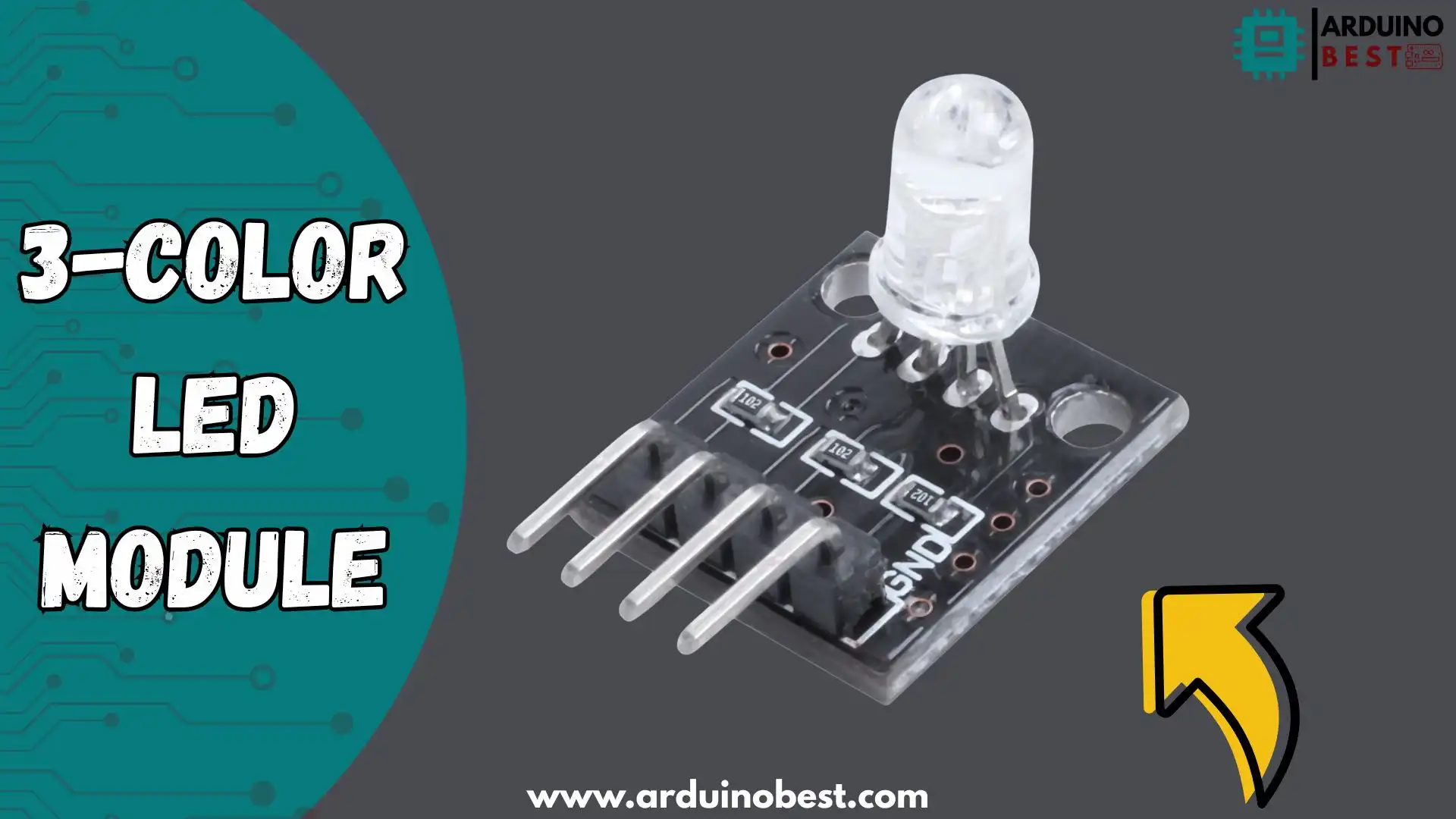Introduction
A 3-color LED module is a versatile lighting component that utilizes three primary colors—Red, Green, and Blue (RGB)—to create a full spectrum of colors. These modules are used in a variety of applications, from home decor to commercial displays, and have become essential in modern electronics. By understanding the technical workings and diverse uses of these modules, you can enhance your projects with efficient and vibrant lighting solutions.
The growing popularity of RGB LEDs is fueled by their flexibility, energy efficiency, and ease of use. Whether you’re a DIY enthusiast, a developer, or a hobbyist, integrating a 3-color LED module into your project can make a significant difference. Adafruit RGB LED Products provide a great starting point for anyone interested in working with these modules.
What is a 3-Color LED Module?
A 3-color LED module typically consists of three LEDs—Red, Green, and Blue—which can be controlled independently to mix and create any color in the visible spectrum. When combined in various proportions, these colors can produce different shades and tones, such as white, purple, cyan, and more.
How They Work:
- RGB Color Mixing: By adjusting the intensity of each of the three LEDs (Red, Green, and Blue), it’s possible to generate millions of colors.
- PWM (Pulse Width Modulation): Most 3-color LED modules use PWM to control the brightness of each LED, allowing for smooth transitions between colors and efficient power management.
- Controllers: These modules often require a controller or microcontroller (like an Arduino) to adjust the color and brightness levels via programming.
Learn more about controlling these LEDs with an Arduino tutorial.
Types of 3-Color LED Modules
There are several types of 3-color LED modules, each suited for specific applications:
- RGB LED Strips: Flexible strips with RGB LEDs that can be used for lighting projects, creating ambiance, or as backlighting.
- RGB Dot Matrix Modules: Used in display systems for scrolling text, graphics, or creating pixelated visuals.
- RGB LED Panels: Larger modules that allow for high-resolution displays or detailed lighting effects.
- Individual RGB LEDs: These are the individual units found in many electronics projects, such as toys and indicators.
These modules come in different sizes and configurations, making them adaptable for various setups. When selecting an LED module, consider the voltage, power consumption, and size that best fit your needs.
How Does a 3-Color LED Module Work?
The key technology behind a 3-color LED module lies in the way colors are mixed. Each of the primary colors (Red, Green, and Blue) is emitted by its corresponding LED. By adjusting the intensity of each color through a process known as PWM, a wide array of colors can be created.
Key Components:
- Red, Green, and Blue LEDs: These are the primary elements that emit different wavelengths of light to create various colors.
- PWM Controllers: These are used to control the brightness of each LED, allowing for precise color mixing.
- Microcontroller: Devices like Arduino are often used to program and control the LED module.
For instance, if the red and green LEDs are fully illuminated while the blue LED is turned off, the result is yellow. If all three are set to their maximum brightness, the LED will produce white light. Understanding PWM is crucial for precise control over the output of the module.
Applications of 3-Color LED Modules
Home and Decorative Use
- LED Strips for Ambient Lighting: These are perfect for creating mood lighting or decorating furniture and spaces.
- Smart Lighting Systems: In home automation projects, RGB LEDs are used to create customizable lighting effects that can be controlled via smartphone apps.
Industrial and Commercial Applications
- Digital Signage: RGB LEDs are widely used in advertisements, digital billboards, and informational displays.
- Indicators and Status Lights: These modules are often employed in consumer electronics, appliances, and vehicles to indicate operational status.
Consumer Electronics
- Backlighting: RGB LEDs are commonly used for backlighting in television sets, smartphones, and gaming consoles.
- Customizable User Interfaces: Some electronic devices use RGB LEDs to signal different operational modes or statuses.
Automotive Use
- Vehicle Interior Lighting: Many modern vehicles feature customizable RGB lighting, enhancing the aesthetic appeal and user experience.
How to Use a 3-Color LED Module
Step-by-Step Guide:
- Wiring: Connect the RGB LED module to a microcontroller like Arduino. Typically, the three channels (Red, Green, Blue) are connected to PWM-capable pins.
- Programming: Write a simple program to control the brightness and color of each LED channel. Arduino libraries like Adafruit NeoPixel can simplify this process.
- Powering: Ensure that the power supply matches the voltage and current requirements of the LED module to prevent damage.
- Experimenting with Colors: Test various color combinations and transitions to achieve the desired effects for your project.
Troubleshooting:
- Flickering or Dim LEDs: Ensure your power supply is adequate for the current requirements of the LEDs.
- Color Misrepresentation: Check that the PWM values for each color channel are set correctly in your code.
Advantages of Using 3-Color LED Modules
- Energy Efficiency: RGB LEDs are far more energy-efficient than traditional lighting solutions.
- Customizability: The ability to mix colors allows for dynamic, customizable lighting setups.
- Compact Size: These modules are small and can fit into many projects, including portable devices and DIY projects.
- Long Lifespan: LEDs have an extended lifespan, often lasting over 50,000 hours.
Challenges and Limitations of 3-Color LED Modules
Despite their versatility, 3-color LED modules do come with certain limitations:
- Complexity in Control: Managing multiple LEDs or large arrays of RGB LEDs requires careful programming and control.
- Brightness: While LED modules are energy-efficient, they may not be as bright as traditional lighting options in certain applications.
- Color Accuracy: Not all RGB LEDs produce true colors, particularly white. Some LEDs may appear more “cool” or “warm” depending on the color temperature.
Future Trends in 3-Color LED Modules
As technology advances, we can expect even more efficient and advanced RGB LED modules. Upcoming trends include:
- Smart RGB LEDs: Integration of IoT and smart technology will allow for greater remote control and automation.
- Flexible and Transparent LEDs: New materials will allow for more versatile shapes and transparent lighting options.
- Enhanced Color Accuracy and Efficiency: Future RGB LEDs will likely offer better color rendering and lower power consumption.
FAQs
- How do I control the brightness of an RGB LED?
By using PWM (Pulse Width Modulation), you can adjust the brightness of each individual LED channel (Red, Green, Blue). - Can I use a 3-color LED module with an Arduino?
Yes, 3-color LED modules are compatible with microcontrollers like Arduino and can be controlled via programming. - What is the difference between a 3-color LED and a single-color LED?
A 3-color LED module can display a wide range of colors by mixing red, green, and blue, whereas a single-color LED only emits light in one color. - Why do some RGB LEDs not produce true white light?
Some RGB LEDs cannot mix the colors precisely enough to create true white light, often resulting in a cooler or warmer shade of white.
Conclusion
In conclusion, 3-color LED modules have revolutionized the way we approach lighting design, offering incredible versatility and creativity in a wide range of applications. Their ability to produce a broad spectrum of colors with customizable effects makes them a top choice for both hobbyists and professionals in fields like interior design, gaming, and digital displays.
By mastering the use of RGB LEDs, integrating them with microcontrollers like Arduino, and understanding their operational principles, you can unlock their full potential in your projects. Whether you’re working on creating visually striking lighting effects, developing interactive user interfaces, or simply enhancing the ambiance of a space, RGB LED modules provide the tools needed for innovative design.
As the demand for dynamic and interactive lighting continues to grow, the role of 3-color LED modules will only expand, offering exciting new opportunities for creative expression and technological advancement. By staying informed on the latest trends and integration techniques, you can ensure your projects are on the cutting edge of this ever-evolving field.
Arduino Projects:
1- Complete Guide for DHT11/DHT22 Humidity and Temperature Sensor With Arduino
2- DHT11 – Temperature and Humidity Sensor
3- DHT22 – Temperature and Humidity Sensor (more accurate than DHT11)
4- BMP180 – Barometric Pressure and Altitude Sensor
5- BMP280 – Barometric Pressure & Temperature Sensor
6- BME280 – Temperature, Humidity, and Pressure Sensor
7- Arduino Flex Sensor Controlled Robot Hand
8- Arduino ECG Heart Rate Monitor AD8232 Demo
9- Arduino NRF24L01 Wireless Joystick Robot Car
10- Arduino Force Sensor Anti-Theft Alarm System
11- Arduino NRF24L01 Transceiver Controlled Relay Light
12- Arduino Rotary Encoder Controlled LEDs: A Complete Guide

